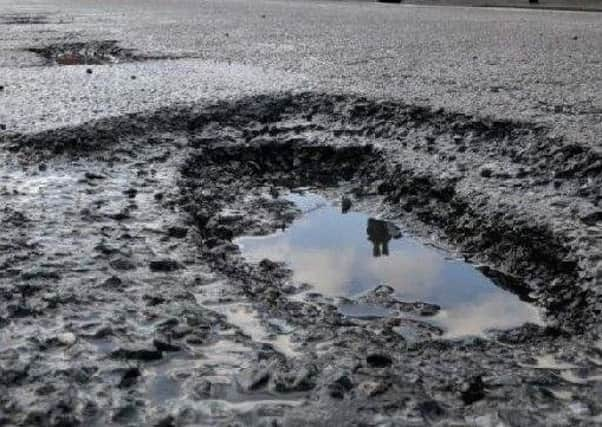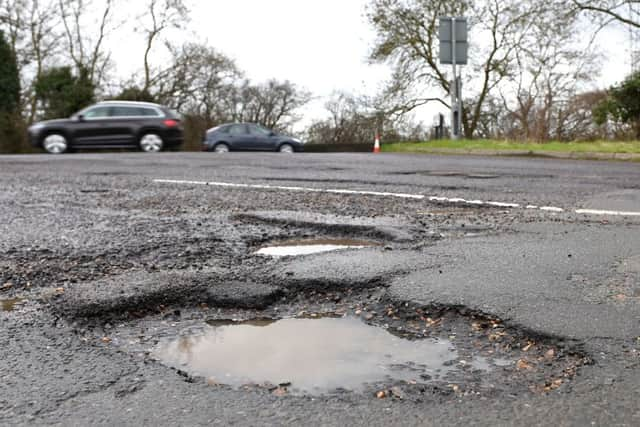This is how long it takes Sunderland City Council to react to severe potholes in roads, as RAC Foundation research reveals target response times


Research by the RAC Foundation found that the authority aims to get issues relating to potholes identified within 120 minutes.
However, the council is unlikely to investigate potholes which have depth of 40mm or less.


Advertisement
Hide AdAdvertisement
Hide AdThree councils, Flintshire, Cumbria and South Lanarkshire, attempt to fix potholes immediately.
A further 16 councils aim to patch things up within an hour, and five within 90 minutes.
The most common response time to the most urgent problems is two hours, with 79 councils including Sunderland looking to patch up roads within this period.
At the other end of the scale Coventry City Council only aims to intervene within five days.
Advertisement
Hide AdAdvertisement
Hide AdAnalysis by the RAC Foundation shows that local highway authorities across the country are increasingly adopting the ‘risk-based’ approach to fixing road defects.
This means, for example, that not only will the size - width and depth - of a pothole be taken into account but also the type of road it is on, the volume of traffic that road carries and the mix of road users.
Based on data received from 190 of the 207 local highway authorities in Britain 75% (142) had already moved to a risk-based approach by Autumn 2018, by when a further 15 (8%) said they were about to move to the new system or were reviewing their existing practices.
Although adopting a risk-based approach is becoming increasingly common, almost all authorities still set minimum investigation levels – based on depth and width measurements – below which they won’t assess potholes, nor assign response times based on the dangers they pose.
These investigation levels vary considerably.
Advertisement
Hide AdAdvertisement
Hide AdWhilst 37 local highway authorities said they would investigate further when a pothole was between 20-30mm deep, 26 others said the depth had to be at least 50mm or more.
Sunderland City Council’s cabinet member for environment and transport Councillor Amy Wilson said: “The council has adopted the Code of Practice for Well Managed Highway Infrastructure which sets out best practice for investigating and repairing potholes.
“The starting point is 4cms (40mm) and its standards include two hours for repairing potholes likely to cause the most harm, to 24 hours for a standard emergency repair.
“With more cold weather and snow forecast in coming weeks, the likelihood of potholes forming increases significantly.
Advertisement
Hide AdAdvertisement
Hide Ad“The council would ask drivers to take more care in such conditions and to report any potholes by calling 520 5550.”
Steve Gooding, director of the RAC Foundation, said: “It is good to see that the vast majority of local highway authorities are adopting the best practice ‘risk-based’ approach recommended by the UK Roads Liaison Group, which is putting the risk to road users front and centre alongside the potential for a defect to develop into a bigger structural problem.
“The total number of potholes being filled in might still be limited by a shortage of funding, but this approach at least means those that are most dangerous are fixed first.
“It is understandable that large rural authorities set themselves longer response times, simply as a result of having to travel further to effect repairs, but motorists might still be surprised to see such a wide variation across the country.
Advertisement
Hide AdAdvertisement
Hide Ad“Those particularly vulnerable to potholes – cyclists and motorcyclists – might ask whether the speed of pothole investigation should be based solely on the risk to users.”
The latest guidance from the UK Roads Liaison Group – a collaboration of both national and local government – recommends that primary, secondary and main distributor roads are inspected by Local Highway Authorities once a month; link roads once a quarter; and local roads once a year.
Inspections aim to identify all road defects, not just potholes but also damaged or missing manhole covers and drain grates, and damage to the edge of the carriageway.